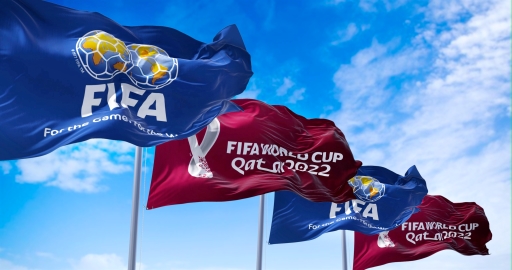4 Qatar: an opportunity for identity development?
Much has been written about FIFA’s controversial decision to award Qatar the hosting rights for the 2022 men’s World Cup. The focus in this section will be to explore how football may contribute to national identity, both in Qatar and other nations.
Qatar has been an independent nation only since 1971 and their government’s National Development Strategy 2018–22 clearly shows that the sport would play an important role as a driving force in three areas:
- adaptation to the global market place
- improve the country’s image
- contribute to the national identity as a healthy and sporting nation.
Activity 4 What makes up national identity?
This activity has two parts.
- First, read the following outline on what national identify is based on – it is a simplified version of an article from a Qatari Living2022.com website inspired by the hosting of the World Cup and the development of the Qatari national brand.
National identity is socially constructed as people align themselves to the alleged characteristics of their specific nation. It may be based on a nation’s:
- history
- traditions
- culture or language
- ideology and values
- achievements
- pastimes.
If you align yourself with your nation’s identity it may create a sense of who you and we are i.e., belonging. It is built on commonality. National symbols are created, such as flags and emblems, to represent the identity. These may be used to show our belonging and shared pride. For instance,
- National flags are generally designed to mirror a nation and citizen’s characteristics and to signify significant history.
- National emblems are used in addition to a national flag to act as a symbol of a nation.
- National animals are sometimes chosen by countries as a symbol that represents the nation's values and attributes and/or their place in the nation’s culture or myths.
- Using some of these ideas how you would complete column C for your country? Some examples from France have been added to give you ideas.
| A | B | C |
| National characteristics | Examples from France | Examples from your country |
| Culture or language | Own official language, with several regional dialects. Distinctive cultures based on cinema, fashion and cuisine | |
| Ideology and values | National motto of Liberty, Equality, and Fraternity. Catholicism the predominant religion. | |
| Achievements | Winners of men’s World Cup in 1998, 2018 | |
| Pastimes | Football and rugby union, cinema, literature | |
| National symbols | ||
| Flags | Blue, white and red | |
| Emblems | Great Seal of France, Cockade of France | |
| Animals | Gallic rooster | |
Comment
- The short reading of items that make up national identity is a useful prompt to think about your own understanding of what is used in your own nation’s expression of this sense of belonging. For example, each nation’s flag colours can become the national colours, often reflected in the playing kit of the team and their supporters’ use of colour.
- Thinking about how to complete parts of this table will be easy with tangible symbols such as emblems but harder when it comes to culture, ideology and national achievements. For the English you might say the culture is based on democracy, freedom and fairness and this is often reflected on the football field with the English hatred of injustice. The English achievements reflected in national identify often reference wartime experiences and in some cases supporters wear a red (St Georges) cross emblem.
What is pertinent to Qatari ambitions with such a young nation is what Brannagan and Giulianotti (2015) have described as ‘soft disempowerment’ – which occurs when a nation aims to develop a new global image, and subsequently any shortcomings are quickly judged. The 2022 Qatar World Cup is perhaps ones of the most explicit examples of where new image making can work against a country, as claims of bribery, poor human rights and unethical working conditions have continued to grow since they were named as hosts in 2010 (Ingle, 2021).
A final thought for this session is about national identity and gender…
Often in sport, national identity is dominated with the actions and feelings of only half a population, i.e., predominantly men. This is especially acute in sport with its historical male bias. In the next session you will explore how the women’s game has developed and in some instances changed perceptions and influenced national identity through the World Cup.

